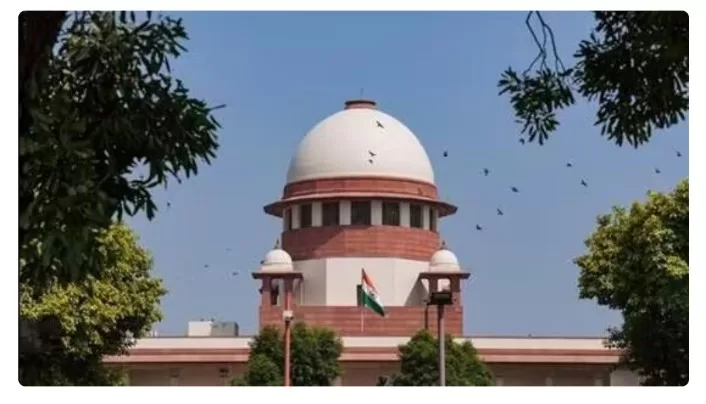The proliferation of illegal arms and ammunition within certain states in India has reached an “alarming” level, as disclosed in a report submitted to the Supreme Court, which has called for immediate and innovative measures to be taken by both the central and state governments to mitigate this pressing issue.
The report, which compiles data from various states, was presented by senior advocate S Nagamuthu, who is acting as an amicus curiae in a suo moto case initiated by the Supreme Court to address the escalating problem of crimes involving unlicensed firearms and locally manufactured weapons. The court had previously directed states to furnish details of illegal arms cases reported by law enforcement in recent times and requested information regarding measures taken to combat this growing predicament.
Nagamuthu noted that “it emerges from these affidavits that proliferation of illegal arms and ammunition is not only prevalent, but the authorities are struggling to curb the same.” The situation is, indeed, deemed “alarming,” with certain states, such as Uttar Pradesh, Bihar, Haryana, Rajasthan, and Madhya Pradesh, experiencing a surge in the seizure of illicit weapons in successive years. This surge is often attributed to the prevalence of violent criminal activity or extremism.
Most notably, Haryana reported over 34,000 cases of illegal arms and unlicensed weapons between 2013 and 2022. Within the past five years, the state police confiscated nearly 13,000 illegal pistols and approximately 4,000 locally crafted pistols or “katta.”
Uttar Pradesh similarly confronted a grave situation, with recorded crimes involving the seizure of illegal arms increasing significantly from 13,395 in 2013 to 24,514 in 2020. In the preceding year, the state recorded over 25,600 cases of illegal weapons.
Rajasthan reported over 7,000 cases of illegal and unlicensed firearms, with incidents on the rise, from 1,872 in 2020 to 1,835 in 2021, and 2,100 last year. As of June this year, the state has already registered 1,335 cases of illegal firearms.
In Bihar, the state authorities uncovered 91 illegal firearm manufacturing units in the Munger district between 2017 and 2022. The police seized 4,188 illegal weapons last year, compared to 4,021 in 2021 and 3,166 in 2020.
A bench of justices BV Nagarathna and SVN Bhatti reviewed the report and has sought responses from both the central government and the states regarding the recommendations made by Nagamuthu.
The report emphasizes the urgent need for the government of India and states to collaboratively devise innovative strategies utilizing science and technology to eliminate illegal arms and ammunition from Indian territory. Failure to promptly develop such methods may result in an uncontrollable situation.
The amicus proposed concrete changes in procedural aspects related to investigation, inquiry, trial, and bail provisions for offenses under the Arms Act, Explosives Act, and Explosives Substances Act.
Additionally, it is recommended to establish a Committee of Experts to comprehensively assess the inputs obtained from states and the central government, offering recommendations on how to address the proliferation of illegal arms and ammunition. The Law Commission of India may also be requested to propose stringent provisions in existing laws or those to be formulated, particularly concerning investigative procedures and trials, within a specific timeframe.
In September, the central government introduced several measures to curb the use of illegal firearms, including the digital linkage of arms manufacturers and dealers, maintaining online ballistic report records to facilitate criminal investigations, regulating online orders for arms, and mandating the marking of each weapon by manufacturers for the purpose of tracing and identification, among other actions.
Using illegal or unlicensed arms in the commission of a crime is punishable under the Arms Act, with sentences ranging from three to seven years.
The Supreme Court’s attention to this issue arose during the consideration of a bail petition by an individual involved in a murder case, highlighting the severity of the problem across multiple states.






